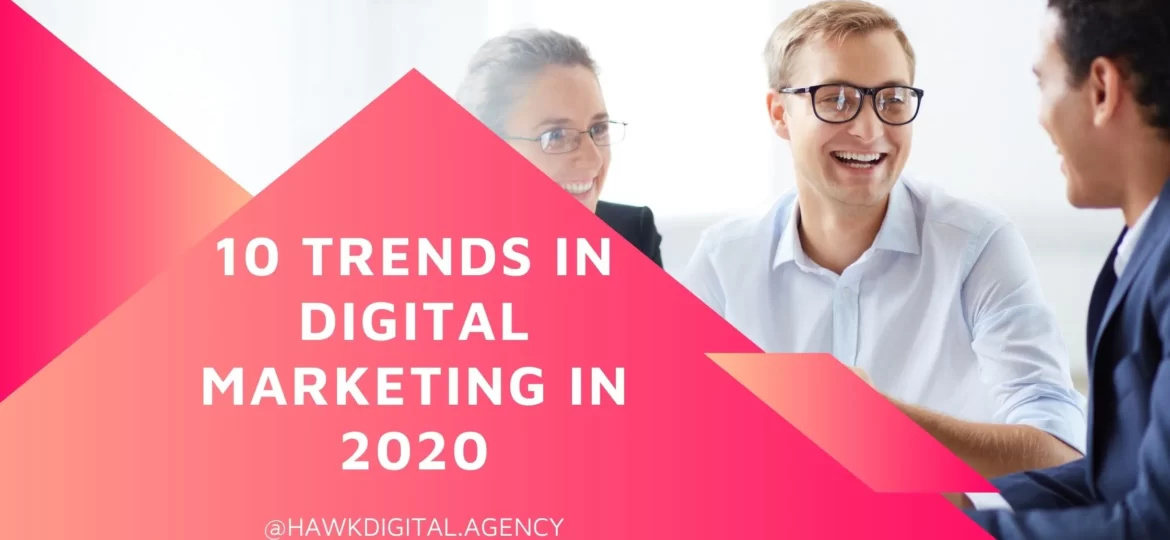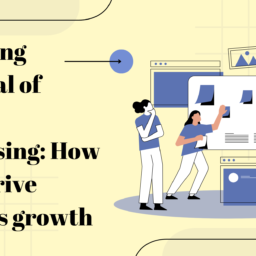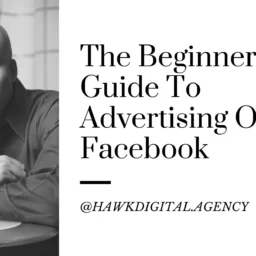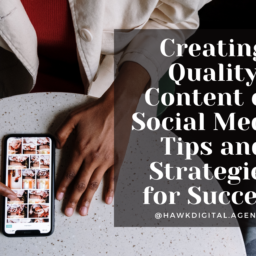
10 Trends in Digital Marketing in 2020
Digital Marketing trends are something you just can’t ignore if you want your business to do well. Once upon a time, all an online company needed was a website and a Facebook page. The same is unimaginable now. We give you 10 Trends in Digital Marketing in 2020.
The digital marketing landscape is evolving so quickly, companies can hardly keep up. If you don’t give yourself the time to learn and adapt, there is a high chance of being left behind.
Facebook is peaking
Facebook is definitely not in its A game in the social media world. Most of the users are over 65 years of age. It may not be a struggling platform, but is losing its credibility among the younger generation. The younger generation is more on the lookout for more visual and engaging platforms like Instagram and TikTok.
It is best if future digital marketers are clear about their target audience. Just because Facebook is not famous among the younger people, doesn’t mean it is not being used. It still stands to be a massive platform which is checked by millions of users on a daily basis. If you know who you are going to connect with, make sure the target group is actively engaging on Facebook. Otherwise, you could be wasting time on the wrong audience.
Instagram is a Hit
Instagram is surely one of the rapidly growing social media platforms and has passed one billion users. Most of the users on Instagram are younger demographic. The most noticed age group is below the age of 30 years. So if your company is looking for a young or fresh audience, Instagram is the place to be.
Chatbots will dominate Customer Service
Chatbots are virtual “concierge” assisting and helping customers achieve their goals. Over time, the system is collecting more and more data which is studied by the AI, helping it learn more about the customer mindset. So the service is going to be continuously improving.
Chatbots played an important role in Facebook during 2018 and 2019 by providing a lot of information and help to users. Bots help personalize the user-experience and enhance focused interactions.
80% of the business started using chatbots to enhance user experience this year as it is a 24 hour service that needs no pay. They also provide an instant response to customer queries.
Videos not an option anymore
If you are not using video marketing in your business already, it is best to start now. The power of videos to sell services or products over powers the content strategy. In the mobile world, people are watching more videos than you think. 70% of the customers share the brand video, 52% claim watching a brand video makes them more confident and 72% of businesses believe it improved their conversion rate.
Video marketing, especially the live ones, are highly engaging. Combining videos with influencers, artists or celebrities to sell your products and endorse your brand can be a huge draw for the audience. Many social media platforms have millions of users who log in every day, and a major portion of them watch live streams of influencers.
Good content with the right context matters
Great content has been an integral part of content marketing in digital marketing and SEO. There is now an increasing emphasis on the nuance in content. As the quality of content always matters, now people notice the context along with the targeting. Google is always updating itself and trying to think more human. So the content you put out is going to matter a lot in the upcoming years.
They recently had the BERT update that helps Google get a better understanding of the natural language of the user. Companies have to keep in mind that they need to create great content in the many years to come, to stay successful.
Personalization of Emails
Emails are an important channel of communication used for personal as well as commercial, industrial and scientific reasons. This places a lot of importance on Email marketing.
Just like other domains of digital marketing, email marketing is also evolving. What makes email marketing a special Trend in Digital Marketing in 2020 is automations and the personalization. If the email is designed to a specific user browsing a particular product, it can be very prompting for them to purchase the product. Email can be the final trigger that motivates an action.
Mainstream Interactive Content
Any type of content that people can click on, swipe or interact with online is termed interactive content. Interactive content is said to be very effective in educating the buyer. Varies ways of trying out interactive content are quizzes and polls, 360 videos and augmented reality advertisements. Their type of content offers users a very engaging and immersive experience and is a huge part of the future and trends yet to come up.
Voice Interaction
There is a rise in Verbal Interaction with devices. This has been steadily improving and rising due to the use of Artificial Intelligence tools like Siri, Google and Alexa.
This is because people like to talk and confide. Machines are now catching up to the way people talk, purchase and shop new things.
The new challenges voice interactive experience present is that it is very different from typing out a query. A text based search presents a tens of options and answers however a voice based search might only give you a few options to choose from. Keywords play an important role in voice searching as well.
Marketing through Messaging Apps
Businesses and companies have taken an interest in social media apps like Messenger and Whatsapp for marketing their services. People seem to be far more active on instant messaging apps compared to social media platforms. In the next few years messenger marketing is predicted to be the top marketing feature. The live chat option feature is way more interactive and draws more people to know more about the company. The messaging way can also include videos and content to draw an audience.
Omnichannel Marketing
Marketing across multiple platforms like social media, blogs, emails, and apps is vital. It can make your business connect to customers through various places and offer a better user experience.
















